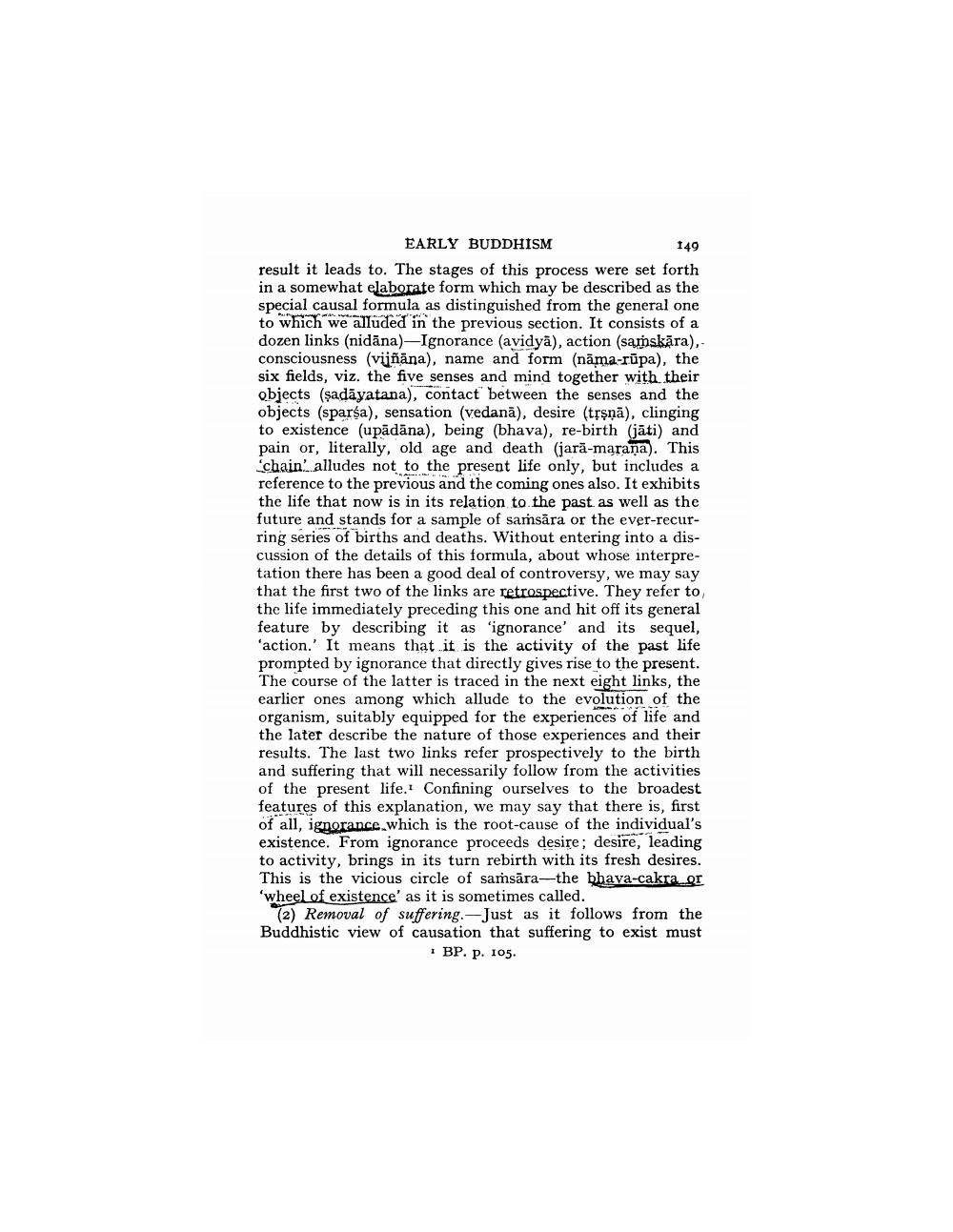________________
149
EARLY BUDDHISM result it leads to. The stages of this process were set forth in a somewhat elaborate form which may be described as the special causal formula as distinguished from the general one to which we alluded in the previous section. It consists of a dozen links (nidāna)—Ignorance (avidya), action (samskara), consciousness (vijñāna), name and form (nāma-rupa), the six fields, viz. the five senses and mind together with their objects (sadāyatana), contact between the senses and the objects (sparsa), sensation (vedanā), desire (trsnā), clinging to existence (upādāna), being (bhava), re-birth (jāti) and pain or, literally, old age and death (jara-marana). This chain alludes not to the present life only, but includes a reference to the previous and the coming ones also. It exhibits the life that now is in its relation to the past as well as the future and stands for a sample of samsāra or the ever-recurring series of births and deaths. Without entering into a discussion of the details of this formula, about whose interpretation there has been a good deal of controversy, we may say that the first two of the links are retrospective. They refer to the life immediately preceding this one and hit off its general feature by describing it as 'ignorance' and its sequel, 'action.' It means that it is the activity of the past life prompted by ignorance that directly gives rise to the present. The course of the latter is traced in the next eight links, the earlier ones among which allude to the evolution of the organism, suitably equipped for the experiences of life and the later describe the nature of those experiences and their results. The last two links refer prospectively to the birth and suffering that will necessarily follow from the activities of the present life. Confining ourselves to the broadest features of this explanation, we may say that there is, first of all, ignorance which is the root-cause of the individual's existence. From ignorance proceeds desire; desire, leading to activity, brings in its turn rebirth with its fresh desires. This is the vicious circle of saṁsāra--the bhava-cakra er 'wheel of existence' as it is sometimes called.
72) Removal of suffering.-Just as it follows from the Buddhistic view of causation that suffering to exist must
BP. p. 105.




